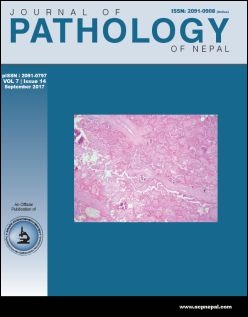Tumor dedifferentiation: diagnostic and therapeutic implications
DOI:
https://doi.org/10.3126/jpn.v7i2.18021Keywords:
Carcinoma, Dedifferentiation, Liposarcoma, Melanoma, Sarcoma,Abstract
Some of the neoplasm especially malignant tumors are notorious in masquerading their cell of origin because of additional mutations which drives them to differentiate into unusual phenotype. This is implicated to a phenomenon of tumor dedifferentiation which can mislead into inappropriate categorization and therapy. Dedifferentiation is well recognized in sarcomas such as liposarcoma, chondrosarcoma and MPNST. However, it can also develop in carcinomas, melanomas and lymphomas at initial diagnosis, following therapy or at recurrence. The phenomenon has been reported in both primary tumors as well as at metastatic foci. A correct and early pathological identification of this phenomenon might profoundly help in guiding appropriate therapy. Clinical and radiological findings, immunohistochemistry and genetic analysis are often required for correct lineage identification of these tumors.
Downloads
Downloads
Published
How to Cite
Issue
Section
License
This license enables reusers to distribute, remix, adapt, and build upon the material in any medium or format, so long as attribution is given to the creator. The license allows for commercial use.




